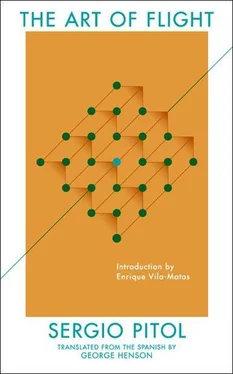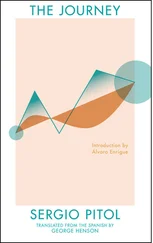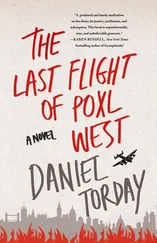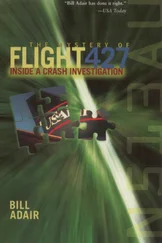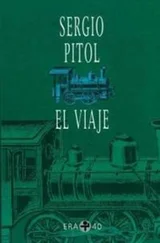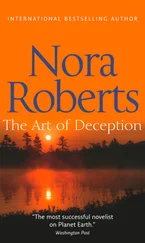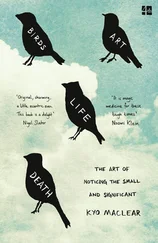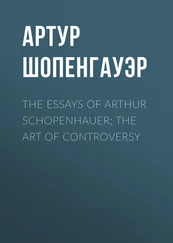26 JANUARY
I’m stunned. I still do not understand what is going on in Chiapas. They say the government now knows who’s leading and protecting the insurgency and within a week everything will be explained. Already today Camacho Solís was not mentioned on the news. During dinner someone said there was an open break between him and the president. If I only knew for sure it was true! What in fact is true is that some of the journalists that receive money from the PRI or from government offices have pounced on him with renewed ferocity. There are times when one feels very discouraged.
27 JANUARY
The Zapatistas’ victory will not be military but moral. They’ve managed to produce a considerable upheaval, both nationally and internationally. Perhaps this will make a transformation in Chiapas possible that would otherwise be impossible to dream of. I’m not getting my hopes up about the acceptance of humanitarian changes by the Chiapas farmers and politicians. Or in the priístas . They still haven’t swallowed their fear and are already mobilizing to put an end to Camacho Solís.
II. WATER FROM THE SAME RIVER
Toward the end of January, I felt the need to visit the theater of events in an attempt to put certain things in order. It seemed to me that around those dates I was making too much in my journal of the circumstances as well as of the Subcomandante. I had many unanswered questions. Perhaps visiting the places where most of the action was taking place, learning the opinions of the witnesses to the occupation of San Cristóbal, for example, could help me see things more clearly. I mentioned it to Paz Cervantes, and she immediately joined the project. Paz knows Chiapas well. She began to organize the trip. We would fly from Mexico to Tuxtla Gutiérrez, and there, at the airport, we would rent a car to drive to San Cristóbal and everywhere the army would allow. She would be responsible for booking the hotel, flights, everything.
On February 3rd I traveled by car from Xalapa to Veracruz, where I would fly to Mexico City, spend the night, and start the trip to Chiapas with Paz early the next morning. A few hours before leaving Xalapa, I received from Italy Tabucchi’s last novel: Pereira Declares , the first book I would read after abstaining for several weeks. I started reading in Xalapa, continued in the car, then on the plane in order to finish it that night in Mexico City. It was the best preparation for beginning the journey, that pilgrimage deep inside myself I hoped to undertake. Tabucchi declares through his hero Pereira that every man harbors within his breast a confederation of souls, a theory that is not new; on the contrary, the concept that multiple personalities coexist for better or worse within the same individual has become a cliché of contemporary culture. Tabucchi, however, resurrects an all-but-forgotten theory of Pierre Janet in which one of the souls that inhabits us maintains hegemonic control over the others, without conceding to that hegemony the possibility of being eternal or immutable. An ego, one of the many that make us up, may, at a given moment and as a result of some stimulus, defeat the heretofore ruling ego, thus becoming the new hegemonic ego that will unify the confederation of souls that is each one of us. Tabucchi’s Pereira is a cautious man in the midst of a dirty and dangerous world; he attempts to remain outside politics, to not swim in murky water, to close his eyes to certain situations. The appearance of a young man who could be the same age as the son Pereira never had will allow the emergence of a new hegemonic ego, which will turn the old man whose only desire is to escape the ugliness of his time into an active enemy of the Salazar regime.
The book was predestined for me, and I read it at the most opportune moment, as I was beginning to feel the impulses that were a prelude to the emergence of a new ego. I would know when I confronted the signs of a new reality if this was true or merely wishful thinking. Four days in Chiapas were enough to shake off thirty years or more. Excitement, astonishment, enthusiasm, pain, and anxiety were some of the feelings I experienced simultaneously during those days. It was like witnessing the outbreak of a repulsive tumor and watching the pus furrow through its edges. The nation, the body where the abscess was located, was visibly trying to come out of its lethargy, to breathe, to dust itself off. The journey to Chiapas allowed me to approach reality; at the same time, the accumulation of diffuse and distant circumstances at times made the trip seem unreal, dreamlike, free from the ties of this world.
Traveling with Paz Cervantes, a friend par excellence, was a veritable godsend: she knew the area very well; but not only that, she also knew how to observe, she was able to separate what seemed fused and unite what was dispersed. What’s more, my being there with Carlos Monsiváis and Alejandro Brito for two of those days was another stroke of luck. Thanks to them, I was able to hear Camacho Solís’s statements as well as those of his entourage; we spoke at length with the historian Alejandra Moreno Toscano, who gave us guidelines to orient us in Chiapas’s intricate labyrinth, with politicians of different stripes, with priests, and local as well as foreign journalists. Paz and I also spoke to the everyday people of San Cristóbal. In all of them, we encountered hope for a quick peace, if not tomorrow then the next day. They wished for it, yet at the same time they hoped it would not mean a return to the situation prior to December 31, the day the uprising began. Most claimed that the uprising had been necessary so the world would know the climate of terror Chiapas had endured throughout its entire history, but above all — and they put special emphasis on this — during the last fifteen years. It was four solar days, painful, exhilarating, and hopeful. Paz and I attended with Monsiváis and Alejandro Brito a crowded press conference with Manuel Camacho Solís, in which he announced it would be only a matter of days before they knew when and where the peace talks would be held; we attended at the cathedral a mass for peace celebrated at night and officiated by Don Samuel Ruiz, Bishop of San Cristóbal, attended by the commissioner, several journalists, foreign observers, and hundreds of Indians, who saw in the bishop their most loyal defender, their father.
The four of us: Paz, Carlos, Alejandro, and I traveled one morning to Ocosingo. After passing countless military checkpoints and seeing hundreds of Indians of all ages huddled beside stationary trucks who apparently had been detained by soldiers, we arrived at the locale. I have known few cities as ugly, as lacking in appeal, as Ocosingo. Its ugliness and its clumsiness were, perhaps, the inevitable product of those days. The streets were empty, the shops were mostly closed; in the market some stalls were covered with black cloths. This was the place where the bloodiest encounters between the army and the Zapatistas took place. The city was still tightly guarded. The air was oppressive and detestable. That evening we returned to San Cristóbal in a very somber mood.
That night we spoke to priests whose stories of oppression inflicted on the Tzotzil, Tzeltal, Ch’ol, and Tojolabal people were so atrocious that the memory of the checkpoints on the roads, the Indian families standing in the countryside next to buses and trucks, the military who did not allow even children to sit on the ground, the tanks and patrol cars, the streets in Ocosingo, seem like the details of a delightful fairy tale. The Catholic Church in Chiapas, especially the Bishop of San Cristóbal, had begun to be attacked by journalists, politicians, and the “good” people of San Cristóbal, the coletos , the white elites among whom racism has been endemic. According to one of the priests, they are trying to implicate the bishop in the uprising, which is wholly false. The work of the Church in Chiapas began four hundred years ago with Fray Bartolomé de Las Casas, the first great apóstol de los indios , and has continued until today. The bishop’s actions, another priest says, remain the same. We learned that a few years ago the Church sent out thousands of catechists (I thought I heard more than eight thousand) to live in the most inhospitable regions of Chiapas. They penetrated into the heart of darkness: the Lacandon jungle. They lived as poor as the Indians, in the same conditions; taught them to have faith in Christ, but also to be proud of being Indians. And for that the Chiapas ranchers, the cultural Hispanics of the state, and the coletos of San Cristóbal have never forgiven them.
Читать дальше
